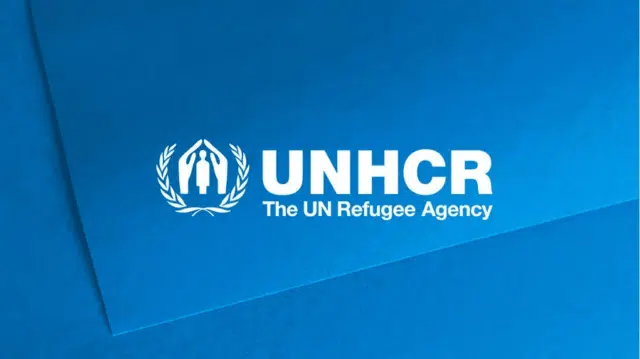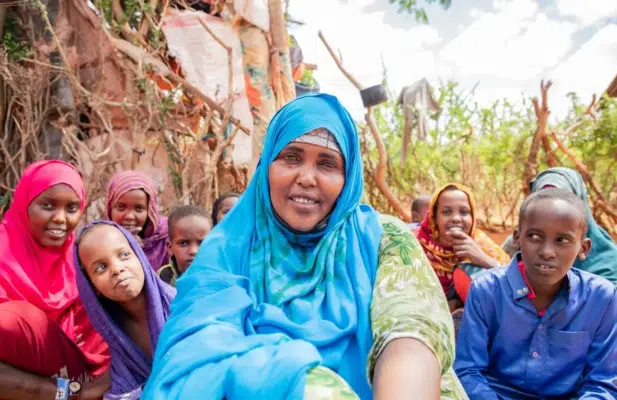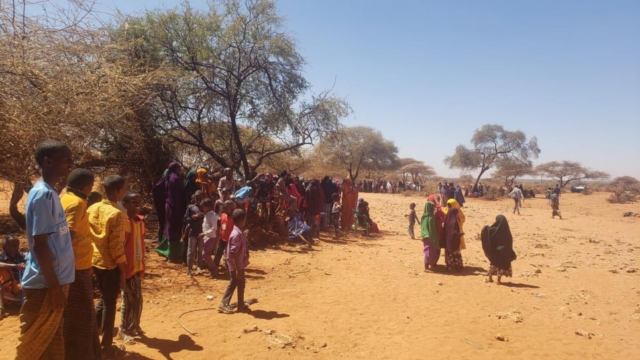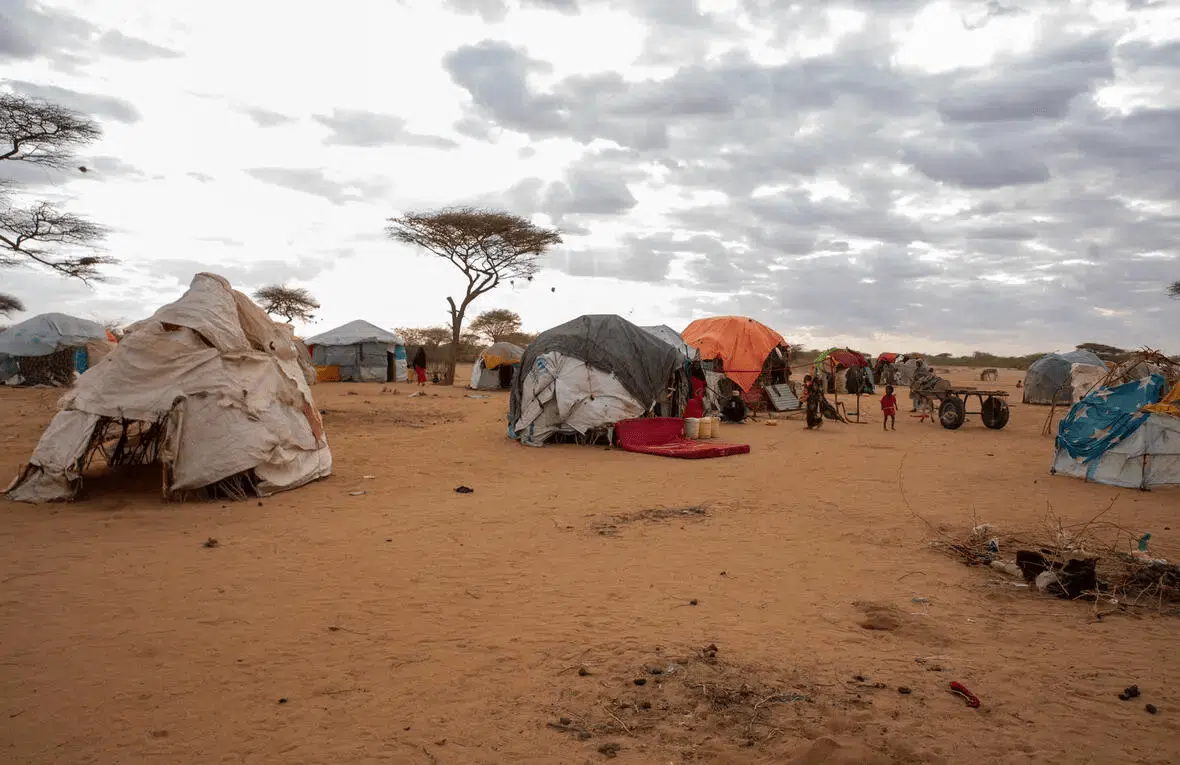
Somali refugees arriving to Dadaab have been pitching makeshift shelters on the outskirts of one of the camps. © UNHCR/Charity Nzomo
Drought and conflict in Somalia have pushed more people to seek safety in Kenya’s Dadaab refugee camp, where residents were already suffering after five failed rainy seasons.
It saddens me to see that Dadaab refugee camp in eastern Kenya – my former home – is once again becoming overcrowded with people fleeing drought and conflict in neighbouring Somalia, more than 30 years after it was first opened.
Over 110,000 Somalis have crossed the border to Kenya in the last two years.
I grew up in Dadaab and can relate to the stories of these people fleeing for their lives. I was in a similar situation in 1991 when my family fled the Somali civil war.
I was just three at the time. My parents told me that armed men killed many people and looted our town. We were among the lucky ones who escaped the violence. It took us five days by car to reach the Kenyan border. The journey was marked by danger and hunger. We exhausted everything, we had no food and water, but we were supported by generous people along the road.
Dadaab became my home and, despite the camp’s restrictions, I was able to go to school and build a journalism career. I feel like I had a lot more opportunities during my time in the early 1990s and 2000s than young people in the camp have now. At the time, there was no war in Ukraine or Sudan or Syria, so at least we had some attention and the world was aware of our plight.
Worst drought in 40 years
However, today the situation is different. It seems nobody knows about the crisis in the Horn of Africa. The failure of five consecutive rainy seasons has turned people’s lives upside down. Those fleeing across borders are left with no help as everyone is reeling from the impact of the prolonged drought.
I recently visited the camp I once called home to talk to people and learn about the impact of the drought. I met with Amina Osman, 35, who has been a farmer all her life, growing mangoes, pawpaws and coconuts along the Jubba River in her hometown Jilib, in the Middle Jubba Region of Somalia. But continued drought means the river, which she depended on for her livelihood, has run dry.
“I have never seen such a drought in my life,” the mother of eight children told me. “The mango trees which sustained us have now dried. All trees in the farm have dried up and fallen as their roots cannot stand.”
Since there were no more crops, they started to slaughter the few starving animals they had to survive. Five months ago, after exhausting everything, Amina was left with no choice but to flee with her children in search of food and water.
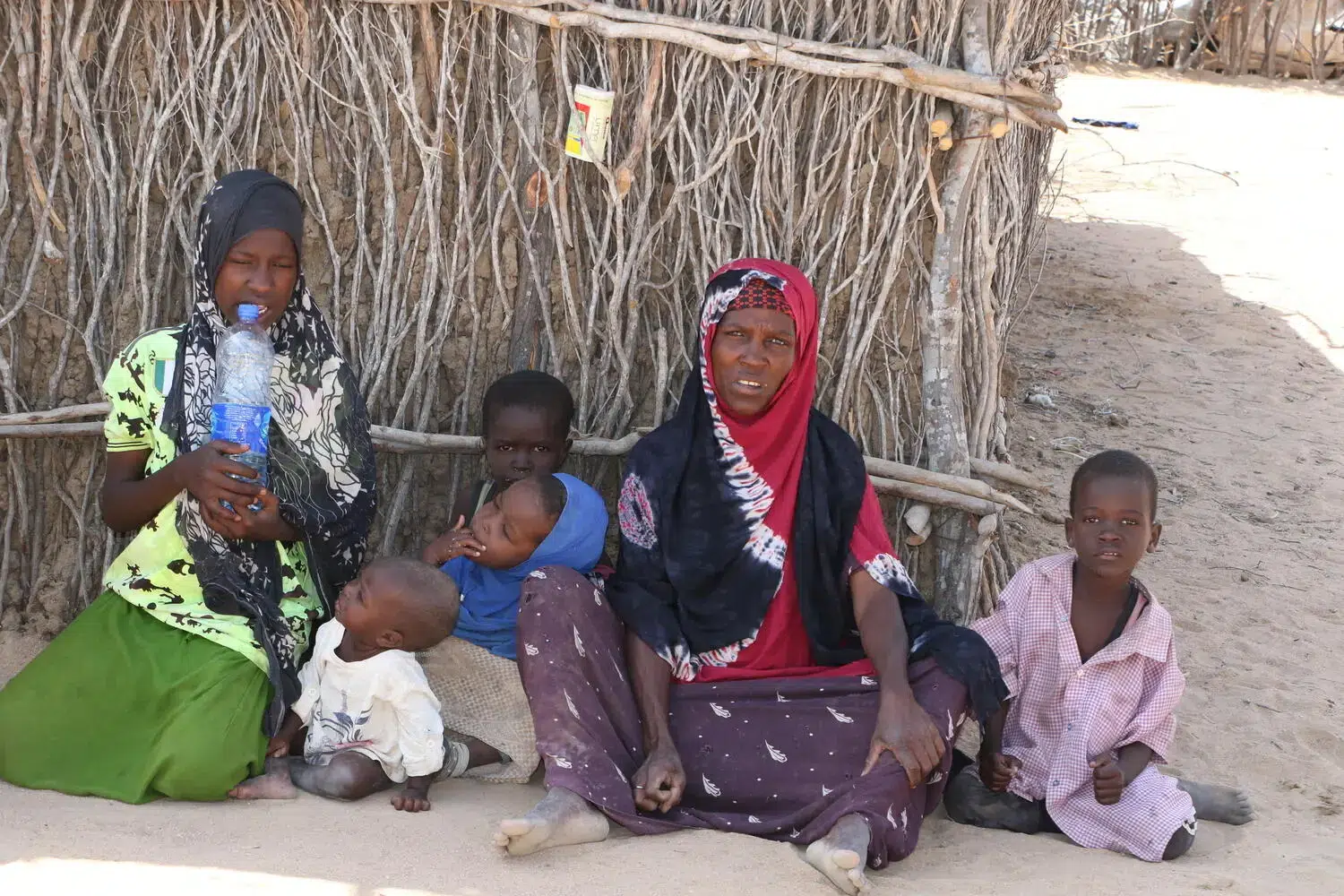
Amina Osman had to abandon her farm in Somalia’s Middle Jubba Region and walk three weeks to reach the Kenyan border. Two of her children did not survive the journey. © UNHCR/Abdullahi Mire
For three weeks, they walked, relying on help from strangers along the way. Unfortunately, two of her children did not make it. They died before crossing the border and reaching Dadaab.
This is the second time Amina has been displaced from her country. In 2011, famine forced her to flee to Kenya for the first time, but she was able to return home to restart her life, only to be driven away again by the current drought.
This drought is so severe that Amina has lost hope of ever returning to her country. “It will never happen. I will stay here and only go … wherever Allah gives me peace and food,” she said.
Fueled by climate change, the drought is the worst in 40 years. It is something 80-year-old Alasa Adan says she has never seen. Starvation claimed the lives of four of her grandchildren before she fled to Kenya to seek food and safety. “The drought is worse than the conflict. You cannot hide from hunger,” she said.
As a journalist, I have regularly returned to Dadaab since moving away in 2013. During that time, I have witnessed other influxes of Somali refugees, but the current crisis feels far worse.
Refugees need more than aid
The scenes in Dadaab today are reminiscent of the 2011 famine, which the UN has estimated claimed the lives of more than a quarter of a million people. Now – like then – people are flocking to the camp with nothing but the clothes on their backs or a few belongings carried on donkey carts.
They arrive exhausted and hungry from their arduous journeys, the backs of their donkeys scarred from bearing heavy loads.
What is worse is that they are arriving to a community already devastated by drought and food insecurity. The camp population has been steadily increasing while resources are shrinking. When I lived in the camp, people would greet new arrivals and share food, water and clothes with them as they waited to be officially registered. But today, such scenes are increasingly rare as people have nothing left to share.
Dadaab is now home to over 320,000 refugees and asylum-seekers, with more arriving each day. The Government of Kenya together with UNHCR, the UN Refugee Agency, and other humanitarian partners are helping newly arrived refugees with basic services including food, water and health care.
But humanitarian aid can only do so much, especially when refugees like Amina and Alasa have no way of knowing if or when they will be able to return home. They need the chance to use their skills and abilities to contribute to the local economy and regain control over their lives.
Together we must prioritize solutions such as local integration and the right to work that offer refugees the chance to gain self-reliance and long-term security. Integration enables refugees to become a part of their host community, giving them access to education, health care and other social services and reducing their dependence on external aid.
With the Horn of Africa in the grip of the worst drought in generations and with no end in sight, we must use every approach to ease the suffering of those fleeing for their lives and the affected communities receiving them before this crisis becomes another catastrophe.
Abdullahi Mire is a journalist and founder of the Refugee Youth Education Hub. A former refugee from Somalia, he lived in the Dadaab camps from the age of 3 before leaving to pursue his studies and career. He currently lives in Nairobi.
Originally published by UNHCR on 02 June 2023.



